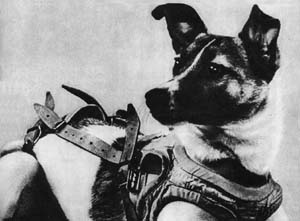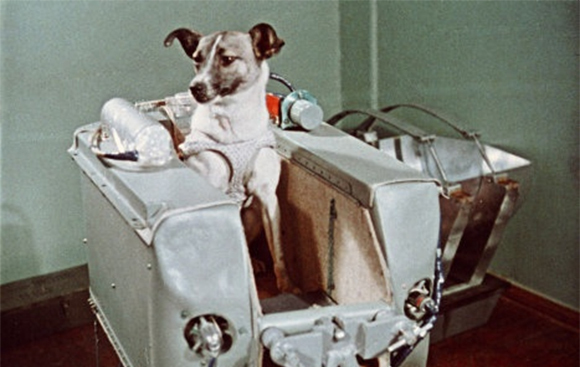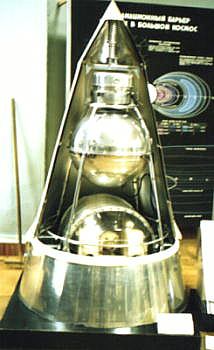One month shy of the launch of Sputnik 1, another R-7 missile was readied on the pad at Baikonur Cosmodrome, carrying another special payload destined for Earth orbit. This time the payload wasn’t just a simple metal sphere with a radio transmitter – instead, the payload was a dog named Laika.

Laika was a stray found on the streets of Moscow. At the time no one knew what the stresses of launch and the microgravity environment of orbit would be on a living body, so naturally animal tests were conducted. Both the United States and Russia had launched animals on sub-orbital flights, but this would be the first time an animal would be sent into orbit. Laika was thought to be a good test subject since she was a few years old and clearly had survived the harsh winters of Moscow. A fitting candidate, they felt.

Laika would be launched on an R-7 carrier rocket in the early morning of November 3rd. Stresses were high, but she survived her launch. While reports at the time said Laika survived for several days before being euthanized as her oxygen supply depleted, it was later revealed that she died sometime around the 4th orbit due to overheating, a probable combination of inefficient cooling system design on Sputnik 2, and the failure of the booster and payload to separate upon reaching orbit. (I made an error here – the booster and the payload were never intended to separate.)

Sputnik 2 model
Laika was never intended to return to Earth – at this time, no one had developed systems to recover a payload from orbit – de-orbit engines hadn’t been designed and tested, nor had safe re-entry and recovery systems. It’s quite a sad thing to think about for a dog that was very well liked those who worked with her for the Sputnik 2 project. The ethics of her flight are debatable. I’m not going to focus on that here, but instead only the fact it happened; On November 3rd, 1957, a dog named Laika became the first living thing in orbit.
We’ve come a long way.
https://en.wikipedia.org/wiki/Laika
https://en.wikipedia.org/wiki/Sputnik_2
